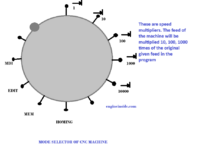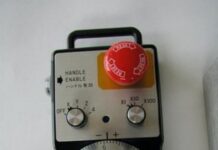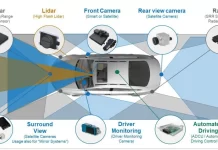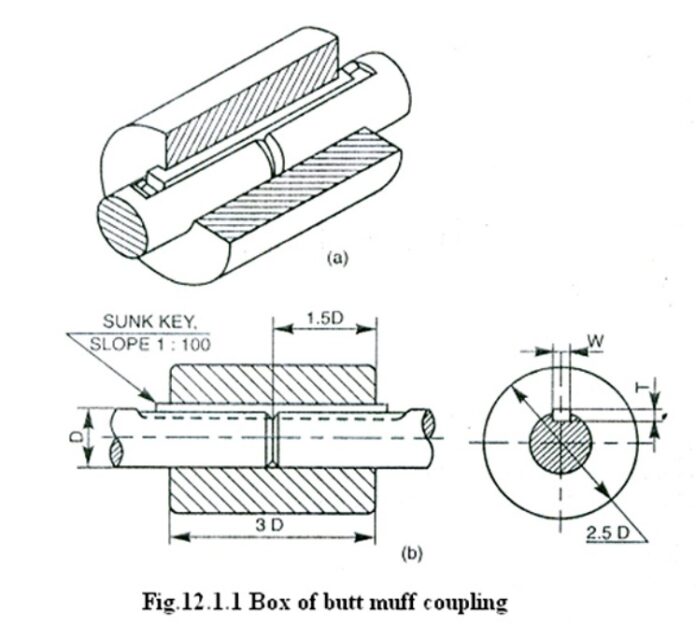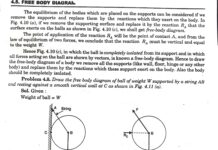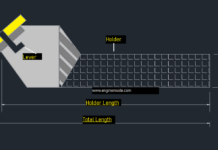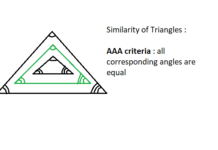Couplings:
Shaft couplings are used for connecting two shafts end for transmitting rotary motion directly from one shaft to another. They act as a one unit and transmit power. The classification of shaft coupling is as below:
A. Rigid couplings
B. Flexible couplings and
C. Loose couplings
(A) Rigid Coupling:
- It does not permit any relative rotation between the two shafts i.e two coupled shaft end work as a rigid piece.
- It is used for connecting the shaft having collinear axis.
Types of rigid Couplings ;
- Muff coupling:
It consist a sleeve (muff) of cast iron fitted over the ends of the shaft which are to be connected. The sunk key is inserted in the key ways in the shafts and sleeve. - Half lap coupling in which the shaft’s ends are tapered and overlap each other for short length.
- Split Muff coupling in which the muff is split in two semi-cylindrical halves which are joined together by means of bolts and nuts. The two halves are recessed in such a way that they can accommodate the required number of nuts and bolt-heads.
- Flanged coupling
This is a extensively used and standard form of coupling. Two cast-iron flanges are either fitted or provided at the ends of the two shafts and fastened together by means of a number of bolts and nuts. Sunk taper keys of rectangular or square cross-section are commonly used in this. The types of flange couplings are; (1) Protected type flange-coupling in which flange is provided with a shroud or annular projection, which shelters or covers the bolt-heads or the nuts, and prevents them from catching clothes of workmen, thus it provides the safety to the worker (2) Solid flanged coupling in which flanges are forged solid integral with the both shafts
(B) Flexible Couplings
A flexible coupling permits relative rotation and variation in the alignment of shafts axes within some limit. The types of flexible couplings are;
(1) Bushed Pin type flanged coupling which is a modified version of a protected
flange coupling in which bolts are replaced by bushed pins fastened one of the flange covered with leather or rubber washer and kept loose in other flange.
(2)Universal coupling is used to couple two shafts whose axes intersect if extended. Two same forks are keyed on to the ends of the two shafts. These forks are pin jointed into a centre-block having two arms at right angles to one another in the form of a cross. The angle between the shafts may be varied even during it’s rotary motion.
(3) Oldham’s coupling is used to connect two parallel shafts whose axes are at a small distance apart and not in alignment. Two flanges, with a rectangular recess on each, are keyed, one on each shaft. Another piece in the form of a circular disc with two rectangular projecting parts at right angles to one another on its opposite sides and, is placed between the two flanges.
(C)Loose Couplings:
With the help of this type of coupling, the shafts may be coupled together or disengaged when required, even while they may be in rotary motion. It consist one part rigidly fixed to the driving shaft and other part mounted with provision for sliding over the driven shaft for engaging and disengaging. The examples of loose couplings are
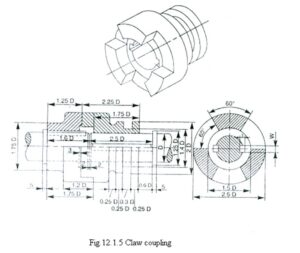
(1) Claw coupling which is a disengaging type of coupling, generally used for slow – speed shafts. One flange is rigidly attached to the end of one shaft by a sunk taper key while other flange is keyed to the other shaft by a feather key so that it can slide freely on that shaft. Each flange has a number of identical projecting claws which engage/fit into the corresponding recesses in the other flange on other shaft. Sliding flange has a groove in the boss in which the forked end of a lever fits. With the help of this lever this flange is made to slide so as to engage with or disengage from the first flange.
(2) Cone coupling which consist of male cone, female cone, two keys driving and driven shaft.










